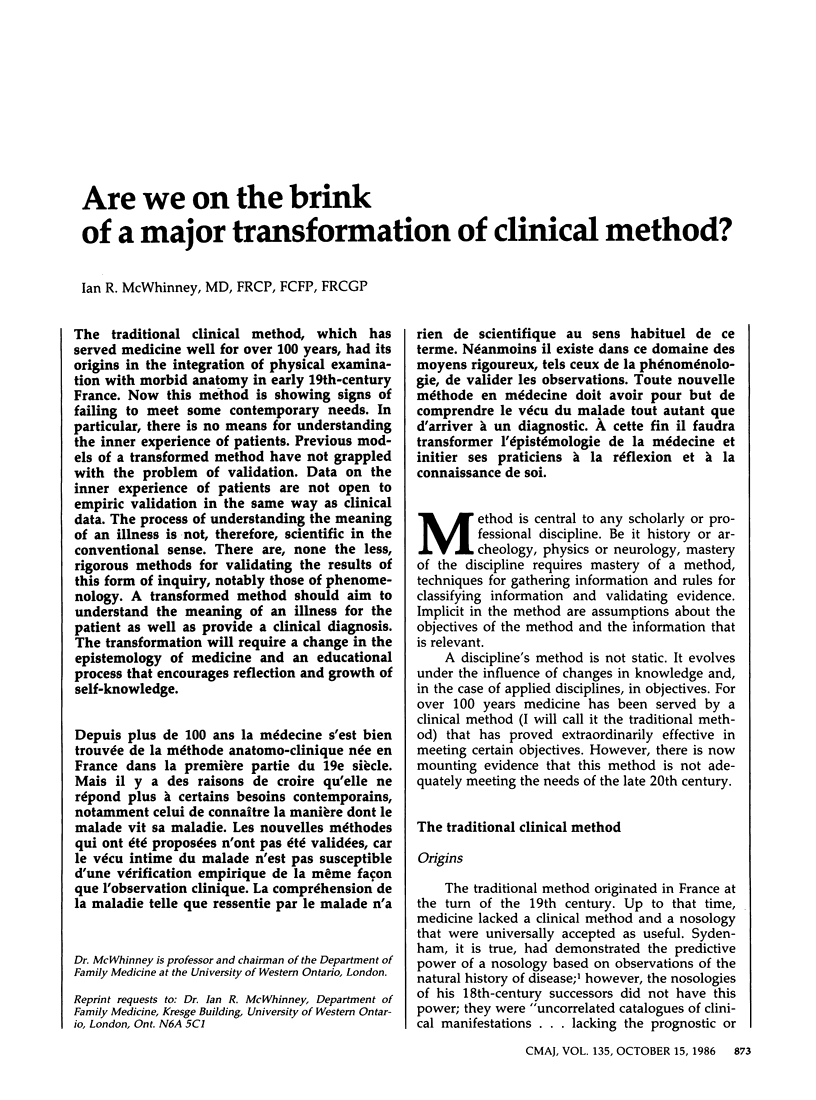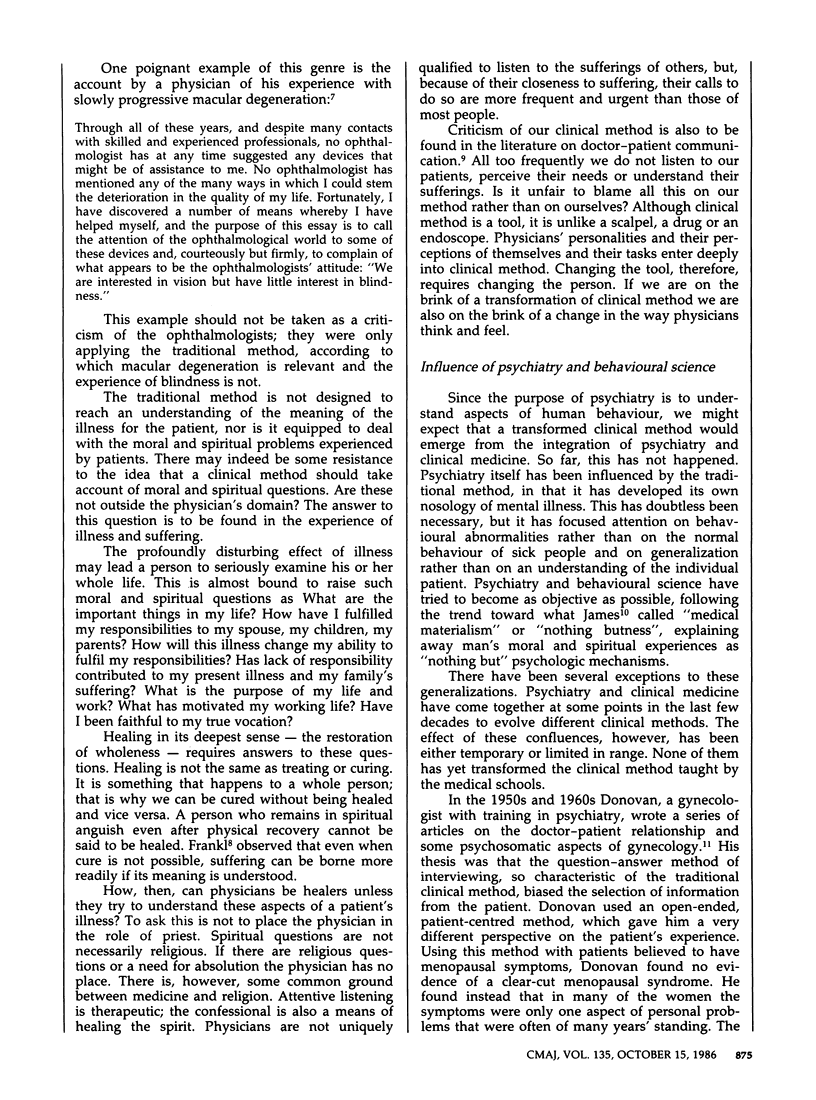Abstract
The traditional clinical method, which has served medicine well for over 100 years, had its origins in the integration of physical examination with morbid anatomy in early 19th-century France. Now this method is showing signs of failing to meet some contemporary needs. In particular, there is no means for understanding the inner experience of patients. Previous models of a transformed method have not grappled with the problem of validation. Data on the inner experience of patients are not open to empiric validation in the same way as clinical data. The process of understanding the meaning of an illness is not, therefore, scientific in the conventional sense. There are, none the less, rigorous methods for validating the results of this form of inquiry, notably those of phenomenology. A transformed method should aim to understand the meaning of an illness for the patient as well as provide a clinical diagnosis. The transformation will require a change in the epistemology of medicine and an educational process that encourages reflection and growth of self-knowledge.
Full text
PDF





Selected References
These references are in PubMed. This may not be the complete list of references from this article.
- BALINT M. The other part of medicine. Lancet. 1961 Jan 7;1(7167):40–42. doi: 10.1016/s0140-6736(61)92203-6. [DOI] [PubMed] [Google Scholar]
- Bass M. J., Buck C., Turner L., Dickie G., Pratt G., Robinson H. C. The physician's actions and the outcome of illness in family practice. J Fam Pract. 1986 Jul;23(1):43–47. [PubMed] [Google Scholar]
- Brown J., Stewart M., McCracken E., McWhinney I. R., Levenstein J. The patient-centred clinical method. 2. Definition and application. Fam Pract. 1986 Jun;3(2):75–79. doi: 10.1093/fampra/3.2.75. [DOI] [PubMed] [Google Scholar]
- Engel G. L. The clinical application of the biopsychosocial model. Am J Psychiatry. 1980 May;137(5):535–544. doi: 10.1176/ajp.137.5.535. [DOI] [PubMed] [Google Scholar]
- Levenstein J. H., McCracken E. C., McWhinney I. R., Stewart M. A., Brown J. B. The patient-centred clinical method. 1. A model for the doctor-patient interaction in family medicine. Fam Pract. 1986 Mar;3(1):24–30. doi: 10.1093/fampra/3.1.24. [DOI] [PubMed] [Google Scholar]
- Predictors of outcome in headache patients presenting to family physicians--a one year prospective study. The Headache Study Group of The University of Western Ontario. Headache. 1986 Jun;26(6):285–294. [PubMed] [Google Scholar]
- Stetten D., Jr Coping with blindness. N Engl J Med. 1981 Aug 20;305(8):458–460. doi: 10.1056/NEJM198108203050811. [DOI] [PubMed] [Google Scholar]
- Stewart M. A. What is a successful doctor-patient interview? A study of interactions and outcomes. Soc Sci Med. 1984;19(2):167–175. doi: 10.1016/0277-9536(84)90284-3. [DOI] [PubMed] [Google Scholar]
- Wilbush J. Climacteric symptom formation: Donovan's contribution. Maturitas. 1981 Aug;3(2):99–105. doi: 10.1016/0378-5122(81)90001-3. [DOI] [PubMed] [Google Scholar]


